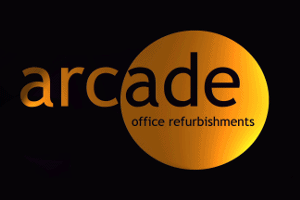With countless stories of people losing their lives at home and work due to fires throughout the world, it is especially heartbreaking to learn that many of these tragedies could have been avoided if certain steps had been taken.
In this blog, we’re going to take a closer look at office fire safety and the steps that management can take to ensure the safety of their staff.
Why should companies care about office fire safety?
While the annual number of fires in the workplace have reduced greatly in the last 30 years, it only takes a single moment of human error to place the entire workforce in danger. And while losing friends and colleagues is a fate too awful to contemplate, it can often also spell the end of the business. Rebuilding, insurance claims, and competitors stealing clients can prevent a recovering company from regaining past positions of strength, potentially leaving large numbers of staff unemployed. No matter how you look at it, steps towards fire prevention should be a priority for any management group.
Get trained
To increase awareness of office fire safety, current legislation requires companies to appoint an individual to implement the necessary safety measures that are required. With a number of free government courses held by regional fire experts, this individual can learn how to keep up to date with precautionary checks and records; establish evacuation routes; lecture staff on fire related procedures; and ensure that all fire detection equipment is well maintained.
Keep track
Depending on the size of the company, current legislation also requires management teams to keep track of all those who enter a building to allow firefighters to know how many people have to be evacuated in the event of a fire. This also extends to sub-contractors who may only be working on site for a single day.
Perform a fire risk assessment
A fire risk assessment is vital for identifying hazards that could ultimately lead to a fire occurring. Risk assessment involves identifying sources of ignition, fuel and oxygen, as well as identifying those employees who may be most at risk before finding ways to limit and/or remove these hazards and ultimately protect those who may be vulnerable.
Electrical certification
Anyone who has ever worked for a company that takes safety seriously will have seen the stickers on the back of electrical appliances stating that they are safe and grounded. These checks are carried out by certified external engineers who test equipment for potential hazards and order the disposal of those appliances that do not reach the necessary criteria. As most offices use large numbers of appliances such as photocopiers, computers and projectors, electrical checks are vital to maintain office fire safety.
Ensure safe storage of flammables
For many companies, avoiding the use of flammable substances entirely is impossible. It is therefore incredibly important to ensure that any materials that could be regarded as fuel are kept in a cool segmented area of the building, where they will not come into contact with sources of ignition.
Office fire safety systems
Today’s technology for both alerting individuals to fires as well as administering early steps towards fighting those fires is extremely advanced. From smoke and heat detectors, to sprinklers and early warning systems, the installation of advanced equipment can be the difference between a fire being compartmentalised and dealt with easily, to a fire destroying vast areas of the building.
Use the right extinguishers
There are four main types of extinguisher used in the workplace, but they must be used in the correct circumstances:
Water – For wood, paper, textile and solid material fires, not liquid, electrical or metal fires.
Powder – For liquid and electrical fires, not metal fires.
Foam – For liquid fires, not electrical or metal fires.
CO2 – For liquid and electrical fires, not metal fires.
As simple as it sounds, making sure that staff know the difference between these before a fire breaks out is vital.
Establish escape routes
Office buildings should always have multiple escape routes, as well as (depending on the size of the building) several meeting points outside away from danger. These routes should be well maintained, kept clear from obstacles and display both emergency signage and lighting. These routes should also be able to cater towards those who are either disabled or less mobile than others to ensure a successful evacuation.
Looking for excellent office designs with exemplary fire safety features in Manchester and surrounding areas?
We help with office design and fit out in Manchester other locations nearby. Feel free to get in touch with us for a no-obligation chat on 01606 333 150 or use the contact form on the right of this page.
